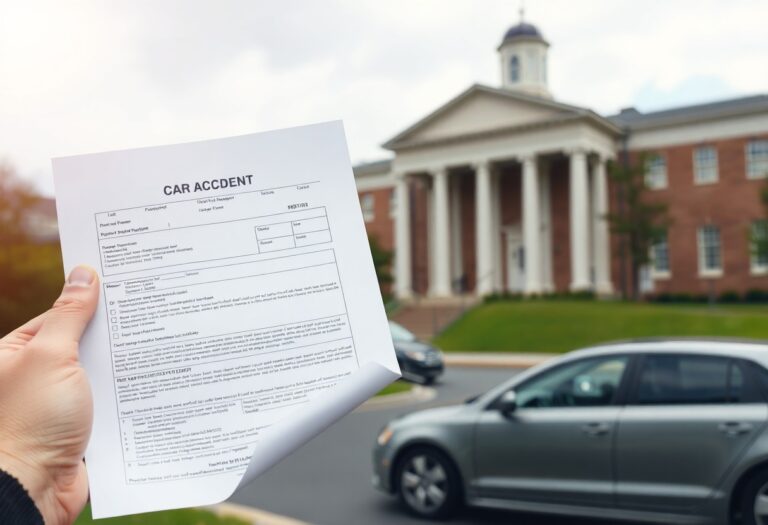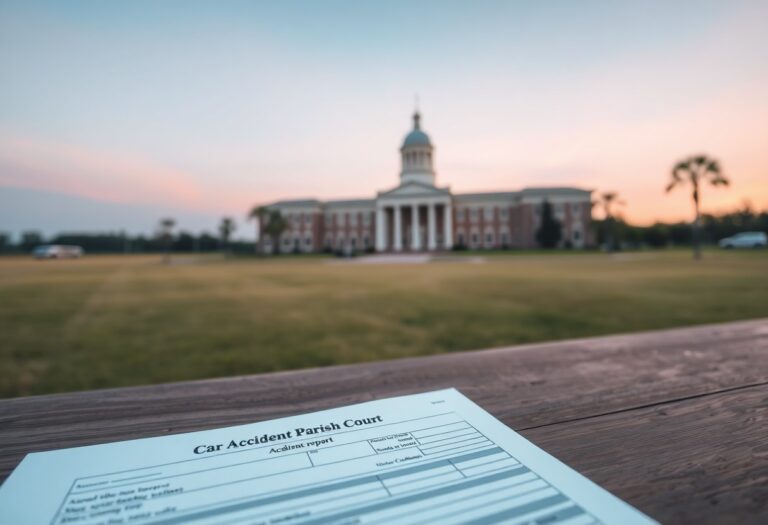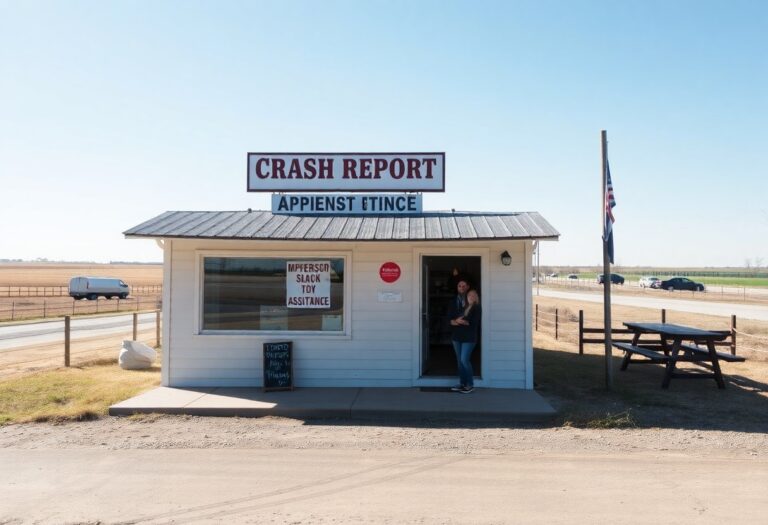Crash incidents can be overwhelming, but accessing your official crash report in Richmond County, Virginia, doesn’t have to be. If you find yourself needing your report for insurance claims or legal matters, this guide will walk you through the vital steps to obtain it quickly and efficiently. From requesting the report to understanding the details it contains, you’ll gain the knowledge needed to navigate the process with ease, ensuring you have everything you need at your fingertips.
The Essential Need for Crash Reports
Accessing crash reports is vital for both legal and practical reasons following an accident. These documents provide a detailed account of the incident, ensuring that you have the necessary information to support your claims and rights, both in and out of court. Without a crash report, reconstructing the events surrounding the accident can become complicated, which may hinder your ability to resolve disputes effectively.
Legal Importance in Virginia
In Virginia, crash reports serve as official records that can be critical during legal proceedings. These documents often outline crucial details like the parties involved, the sequence of events, and potential violations of law. You may rely on these reports to establish liability and support your case, giving you a better position when dealing with any legal challenges that arise from the incident.
Role in Insurance and Liability Claims
Crash reports play a significant role in the insurance claim process, providing evidence that can influence the outcome of your claim. Insurers rely on these reports to verify the facts of the accident, assess liability, and determine the coverage you are entitled to receive. A comprehensive report can streamline negotiations and facilitate a quicker resolution, ultimately benefiting both you and the insurer.
For instance, if you find yourself in a dispute with another driver regarding who was at fault, the crash report can serve as a reference point. Insurance companies often use these official records to evaluate claims and make determinations about coverage. Having tangible evidence, like witness statements and officer observations contained in the report, can significantly strengthen your position in discussions about compensation. If a claim is contested based on differing accounts of the incident, the crash report can provide the necessary clarity and documentation to support your perspective.
Initial Steps: Gathering Basic Information
Before you can obtain a crash report in Richmond County, you need to gather basic information related to the incident. This includes details such as the date and time of the accident, the location, the names of the involved parties, and any witnesses. Having this information readily available will streamline the process, enabling you to pinpoint the specific report you are searching for more efficiently.
Necessary Details Before Requesting
As you prepare to request your crash report, ensure you have all necessary details on hand, including your driver’s license number and the report number if available. This information will become necessary during the request process and help expedite retrieval.
Identifying the Correct Form and Procedure
Your next step involves identifying the correct form and following the appropriate procedure for obtaining your crash report. Richmond County has specific guidelines that dictate how you can request these reports, either online, in person, or via mail.
Start by visiting the Richmond County website or the local police department’s webpage to access the appropriate forms. You’ll often find options for online requests that allow you to fill out necessary documents electronically. Take the time to review the instructions provided with each form, as they will outline submission guidelines, payment requirements, and any additional documentation you might need to include. Following this established procedure will aid in preventing any unnecessary delays, ensuring you receive your crash report as swiftly as possible.
Navigating the Request Process: A Complete Guide
Understanding how to navigate the request process for your crash report in Richmond County can save time and alleviate frustration. Start by gathering all necessary information such as the date, location, and details of the crash. Depending on your preferences, you can choose to make your request online or in person, which can streamline the process and provide you with the report more efficiently.
Online vs. In-Person Requests
Requesting your crash report online offers the convenience of submitting your information from the comfort of your home. You can access the official Richmond County website, where you’ll find a dedicated portal to submit your request. Conversely, if you prefer a more personal approach or need immediate assistance, visiting the relevant office in person is an option. This could allow for real-time interaction and clarification on any questions you may have.
Understanding Fees and Payment Methods
Fees for obtaining crash reports in Richmond County can vary based on the type of report and the method of request. You should expect a nominal fee, typically around $10, which is fairly standard for public records. Online requests might offer different payment options, including credit and debit cards, while in-person requests generally require cash or a check. Always verify the acceptable payment methods prior to processing your request, as this can influence the speed of your access to the report.
Payment methods for requesting crash reports can significantly impact your experience. If paying online, credit cards tend to be the quickest option, often providing immediate confirmation of your request. In-person requests may involve additional steps, such as filling out forms before making payments. Being prepared with the correct form of payment helps avoid delays, allowing you to receive your report promptly. Always check for any updates regarding fees or methods by visiting official county resources, as they can change or have specific requirements based on circumstances.
Interpreting Your Crash Report: What to Look For
Understanding the details of your crash report is imperative for any subsequent actions you may need to take. This document contains critical information about the incident, including the involved parties, the location of the accident, and the factors contributing to the crash. Familiarizing yourself with this information can help you determine liability, provide accurate details to your insurance company, and better prepare you for any potential legal proceedings.
Key Sections of the Report Explained
Your crash report will typically include several key sections: the date and time of the accident, vehicle descriptions, driver and witness statements, and diagrams of the crash scene. Pay attention to the specific details regarding the circumstances surrounding the crash, such as weather conditions, visibility, and road conditions. Each of these elements can significantly affect the interpretation of fault and liability in your case.
Common Errors and How to Address Them
Errors in your crash report can have significant implications for your case. Frequent mistakes include incorrect vehicle information, erroneous witness statements, or missing details about the accident scene. To address these errors, gather any supporting documentation, such as photographs or eyewitness accounts, and contact the appropriate authorities to request a correction.
Addressing errors in your crash report is not just about identifying mistakes; it involves proactively engaging with law enforcement or the agency that issued the report. If you notice inaccuracies, document your findings clearly and reach out immediately to report them. Keep records of all communications. In some cases, you may need to file an official request to amend specific portions of the report. If the errors impact your insurance claims or legal situation, consider consulting with an attorney who specializes in traffic incidents to guide you through the rectification process effectively.
The Aftermath: What to Do With Your Report
After obtaining your crash report, it becomes crucial for various processes following the incident. This document serves not only as a record of what transpired but also plays a critical role in your insurance claims, potential disputes, and legal considerations. Knowing how to properly utilize this report can significantly impact the outcomes of your situation.
Using Your Report for Insurance Claims
Your crash report contains detailed information about the incident, including officer statements, vehicle damage, and witness accounts, which can be invaluable when filing your insurance claim. By submitting this report to your insurance provider, you strengthen your case for reimbursement or compensation, helping to ensure more favorable outcomes in claim assessments.
Filing Disputes and Seeking Legal Counsel
If you believe that the crash report inaccurately depicts the circumstances of the accident, filing a dispute should be your next step. Consulting with a legal professional can help you understand your options, especially if you think that the report may negatively affect your claims or liability. An attorney can assist in gathering additional evidence to support your case.
Filing a dispute involves several specific steps. First, you’ll want to collect supplementary evidence, such as photographs from the scene, statements from witnesses, or additional documentation supporting your account of the incident. Legal counsel can guide you on how to present this evidence effectively, potentially leading to an amended report that reflects a more accurate version of events. Engaging an attorney can provide insights not only into navigating the dispute process but also into ensuring your rights are protected throughout any ensuing legal proceedings.
Conclusion
With these considerations, you now have a clear path to access your crash report in Richmond County, Virginia. By following the outlined steps and utilizing the provided resources, you can efficiently obtain the necessary documentation following a vehicle accident. Ensure you have all required information handy to streamline the process. By being proactive, you can facilitate the resolution of any insurance claims or legal matters related to your incident.













